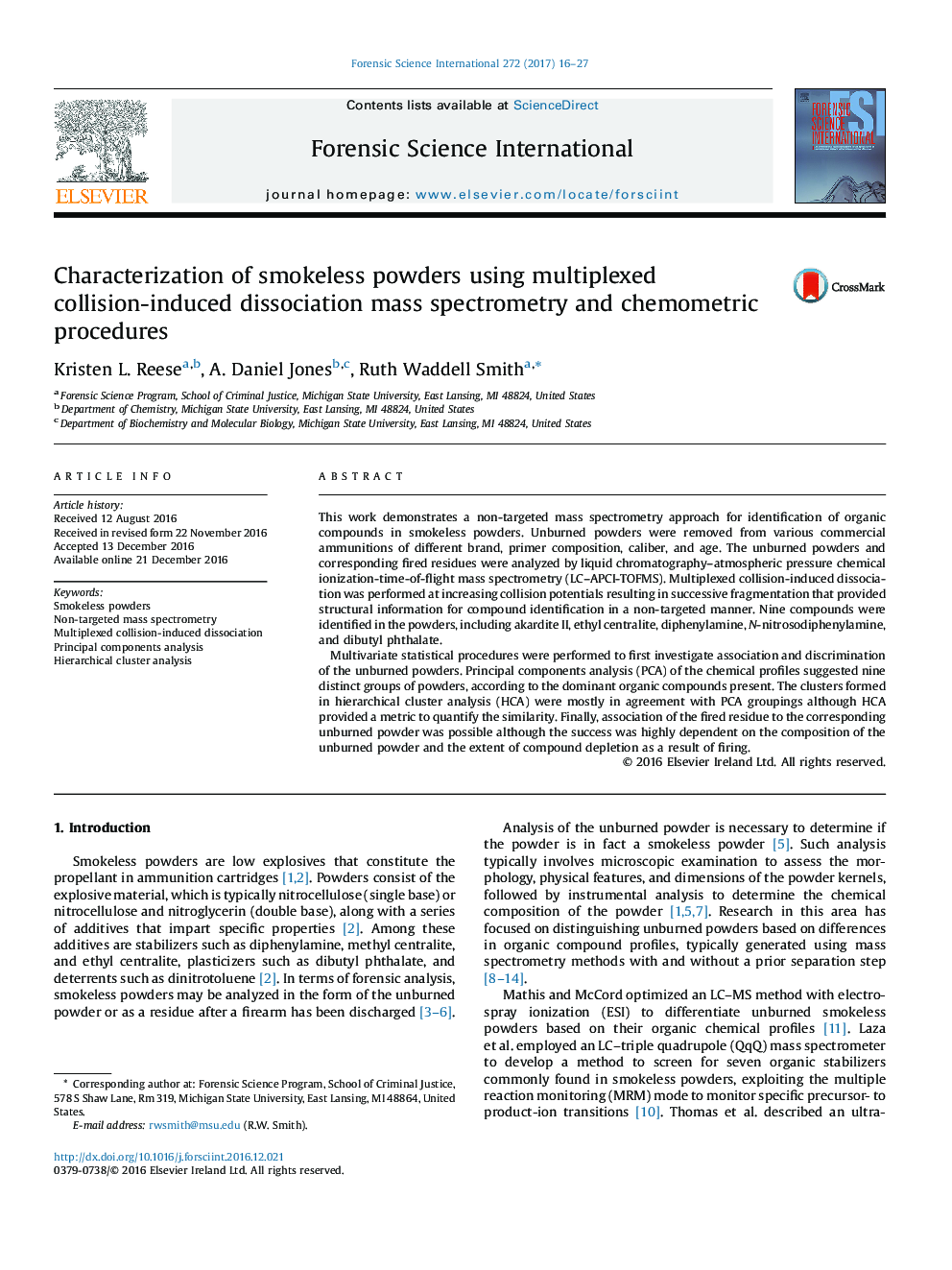| کد مقاله | کد نشریه | سال انتشار | مقاله انگلیسی | نسخه تمام متن |
|---|---|---|---|---|
| 6462424 | 1421978 | 2017 | 12 صفحه PDF | دانلود رایگان |
- Chemical characterization of unburned smokeless powders and fired residues by LC-APCI-TOFMS.
- Multiplexed collision-induced dissociation for non-targeted compound identification.
- PCA and HCA to associate and discriminate powders using organic compound profiles.
- Powder composition independent of brand, caliber, and primer composition.
- Association of fired residue to unburned powders dependent on initial powder composition.
This work demonstrates a non-targeted mass spectrometry approach for identification of organic compounds in smokeless powders. Unburned powders were removed from various commercial ammunitions of different brand, primer composition, caliber, and age. The unburned powders and corresponding fired residues were analyzed by liquid chromatography-atmospheric pressure chemical ionization-time-of-flight mass spectrometry (LC-APCI-TOFMS). Multiplexed collision-induced dissociation was performed at increasing collision potentials resulting in successive fragmentation that provided structural information for compound identification in a non-targeted manner. Nine compounds were identified in the powders, including akardite II, ethyl centralite, diphenylamine, N-nitrosodiphenylamine, and dibutyl phthalate.Multivariate statistical procedures were performed to first investigate association and discrimination of the unburned powders. Principal components analysis (PCA) of the chemical profiles suggested nine distinct groups of powders, according to the dominant organic compounds present. The clusters formed in hierarchical cluster analysis (HCA) were mostly in agreement with PCA groupings although HCA provided a metric to quantify the similarity. Finally, association of the fired residue to the corresponding unburned powder was possible although the success was highly dependent on the composition of the unburned powder and the extent of compound depletion as a result of firing.
Journal: Forensic Science International - Volume 272, March 2017, Pages 16-27
